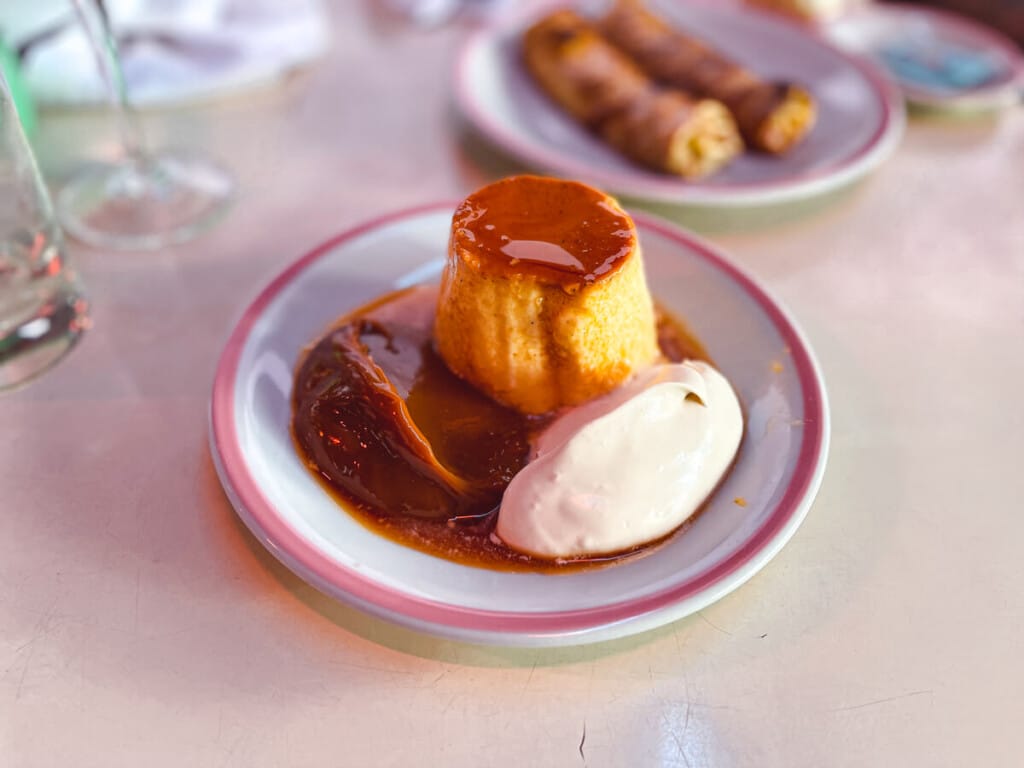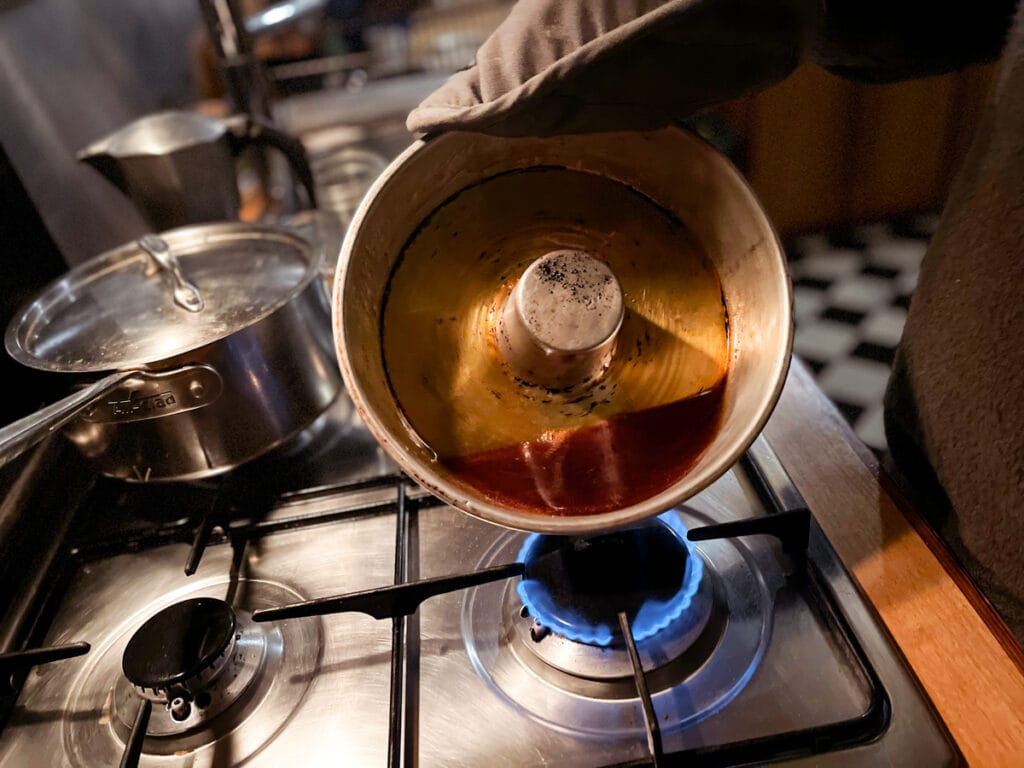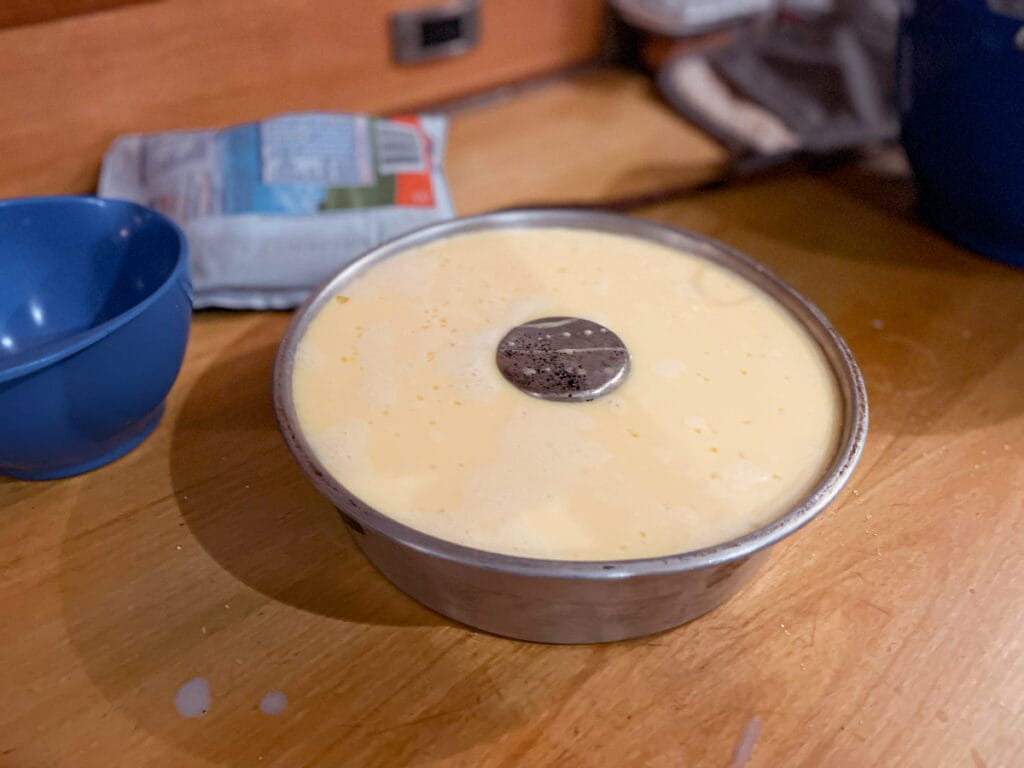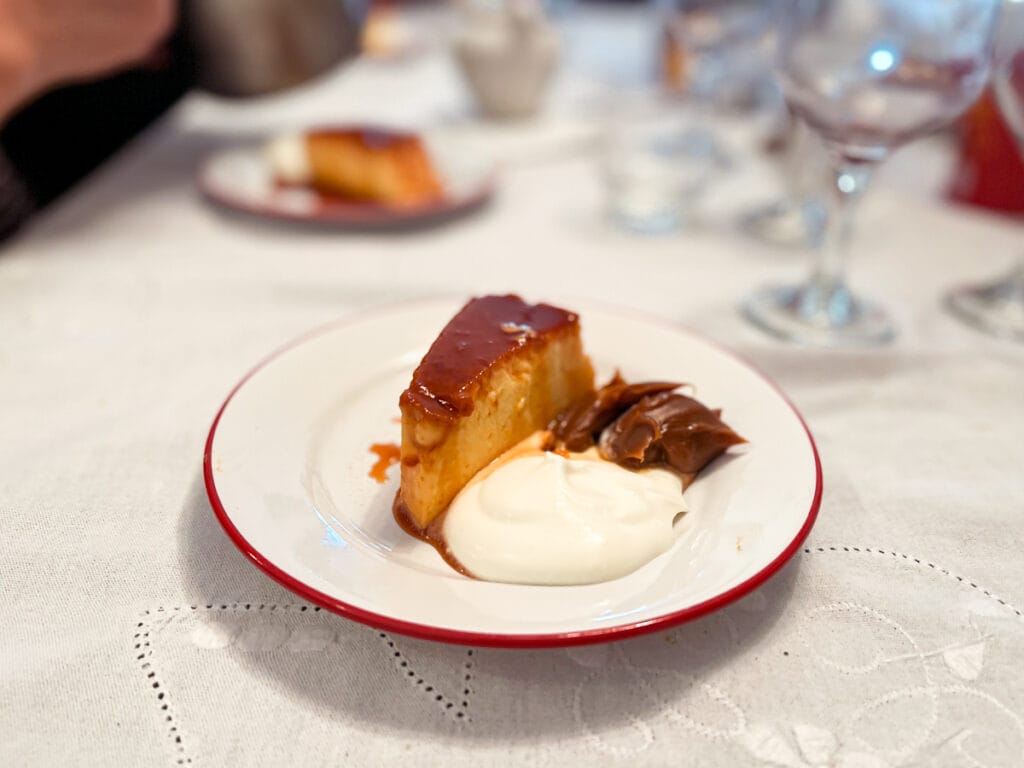I’ve been blessed to marry a man who can cook.
After living in Argentina with my Porteño husband for more than a decade, I’ve become spoiled with many an asado for all special events, followed by traditional flan casero, easily one of the most traditional desserts in Argentina.
I’ve been watching him make it for years and finally brought out a notepad to observe, taking down his personal flan casero recipe to share with you.
It’s similar to many an Argentine abuela’s recipe, including the basics: a lot of eggs, a liter of milk, and a decadent, gooey caramel sauce.

QUICK NOTE: This post contains affiliate links and Sol Salute may receive a commission for purchases made through these links, at no extra cost to you.
History of Flan in Argentina
While writing out this recipe, I started to think about flan and how it exists everywhere in the Latin world.
What is it that makes Argentine flan so special?
How did it get here?
I assumed Spain was the answer and for a second decided to leave it at that.
But, I’m nothing if not thorough and after (admittedly briefly) looking into it, I discovered that Argentine’s flan actually dates all the way back to ancient Rome.
Called “tyropatina,” the recipe was fairly similar to what I’m writing here but it also involved honey (great) and a powdering of black pepper (not great).
Eventually I was right that flan made the final jump to Argentina from Spain as it continued to evolve across countries, cultures, and centuries.
And thank God, Argentina accompanies its flan with dulce de leche and not black pepper.
Want to learn in person? If you’re in Buenos Aires, take a class with Criolla Cooking & Wine and learn how to make flan like a local with the locals!
What is Flan Mixto?
And speaking of dulce de leche, what is Argentine flan mixto?
It’s common in Argentina to serve flan with either a generous dollop of dulce de leche or whipped cream on the side.
Flan Mixto is when you have both, and the combination of DDL and cream is perfectly decadent and decadently perfect.

How to Make Argentina Flan
Preheat oven to 350°F (175°C)
1. The Caramel
The first step in making the perfect flan is by creating that delicious caramel that pools at the bottom of the dish.
Measure 200 grams of sugar and cook it down over medium heat, stirring constantly as it melts to avoid burning.
You can either make the caramel in a separate sauce pan or directly in the mold.
If using a separate pan (which is easiest if using an electric stove), immediately pour the caramel into the mold when done.
If you have a gas stove, you can hold the flan mold with a potholder directly over the flames and melt the sugar down directly in the mold itself (this is what we do).

Once you have the caramel created and in the mold, carefully coat the entire base and sides.
Set aside to cool and thicken.
2. How to Make Flan
Now to make the flan itself.
Crack the eggs into a large mixing bowl and stir.
Add in remaining 200 grams of sugar and stir constantly.
Then slowly add the milk and vanilla, constantly stirring as you go.
Pour egg and milk mixture into the mold over a mesh strainer to filter out any excess air and foam.
Optional: Pause to listen to the satisfying sound of the caramel cracking as the cool mixture comes into contact with it.


3. Bain Marie & In The Oven
Cover with foil and place the mold into a bain marie (another, larger pan filled with water that covers at least half of the flan mold) and put in the preheated oven (175 degrees Celsius/350 degrees Fahrenheit) to cook for one hour.
After one hour, check to see if the flan has set.
Depending on your oven it may need a bit of extra time.
4. How to De-Mold Your Flan
After removing it from the oven, allow the flan to rest in the mold for a few hours or overnight before serving.
When ready to serve, take the mold and hold it over the flames of a gas stove at an angle, rotating it slowly every few seconds to melt the caramel.
This will allow you to easily remove your flan from the mold.
If using an electric stove, keep heat low and rest the mold on the stove.
When you feel that the caramel is melted, place a plate on top of the mold and flip it.
Carefully lift the mold to reveal your perfectly homemade Argentine flan casero!
IMPORTANT: Make sure to be using a dish with at least a little bit of a lip on the side to hold the melted caramel that will pool at the bottom once you remove it from the mold.
Serve your flan with dulce de leche and whipped cream to convert your flan into traditional Argentine flan mixto.

[mv_create key=”1″ type=”recipe” title=”Flan Casero: Argentine Flan Mixto” thumbnail=”https://ewj43icfkoo.exactdn.com/wp-content/uploads/2022/07/flan-caseo-flan-mixo-Argentina-recipe.jpg”]
Keep Reading about Argentine Food:
- 27 Popular Foods in Argentina You Have to Try
- 11 Traditional Buenos Aires Food Experiences
- All About Eating Steak in Argentina
- A Gluttonous Guide to Ice Cream in Argentina
Argentina Travel Resources
- BOOK A CONSULTATION | I offer one-on-one travel consultations to help you plan your trip to Argentina. Pick my brain to get a local’s insight. Click here for more information.
- MY MAP | Buy my interactive map with 300+ pins to have access to the city as I see it. It is an invaluable resource. See more here about how it works.
- AIRPORT TRANSFERS | Having a driver waiting for you is ideal for a stress free arrival, Welcome Pickups is the best option for a driver from Ezeiza or Aeroparque.
- TRAVEL INSURANCE | Always travel insured. Anything can happen anywhere and it is scarier and costlier in an unfamiliar country. SafetyWing’s Essential Plan covers unexpected travel and medical emergencies and even offers add-ons like electronics theft or adventure sports. It is the best if you’re coming on vacation. If you’re coming as a digital nomad or an extended stay, you need their Complete Nomad Plan which also covers routine check ups, maternity, mental healthcare and more. Read more: Health Insurance in Argentina
- PHONE PLAN | These days, traveling with data is essential. Especially in Argentina where everything is managed on Instagram and WhatsApp. I recommend this E-SIM card. It’s hassle-free and affordable, for more read how to get an Argentina sim card.
- ACCOMMODATION IN ARGENTINA | booking.com is the most common hotel site used in Argentina and it’s where you’ll find the most options.
- RENTAL CARS | I love to travel Argentina via road trip, Discover Cars is a great platform to compare different rates and providers.
- BUS TICKETS | Check Busbud for long distance bus routes and tickets.
- VPN | If you’ll be using a public WiFi connection and want to secure your data, I highly recommend using a VPN, I personally use and have had a good experience with ExpressVPN. I also use it to access Hulu and American Netflix from Argentina.
- FLIGHTS | Always check Google Flights and Skyscanner for flights to and within Argentina. Aerolineas Argentina is the local airline with the most routes. FlyBondi and Jetsmart are two budget airlines with dirt-cheap prices (but expect to pay for every add-on like luggage).


